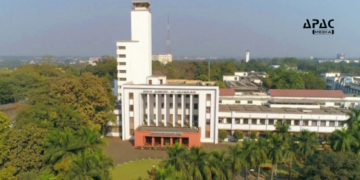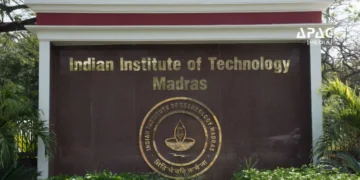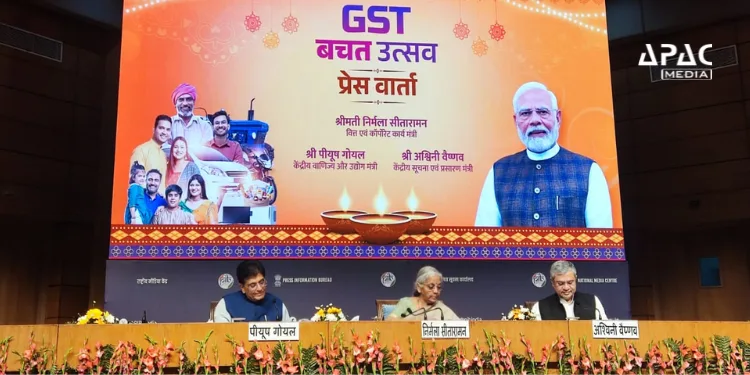New Delhi: India’s electronics and mobile manufacturing ecosystem has achieved unprecedented growth over the past decade, supported by government reforms, production-linked incentives (PLI) and strong global demand.
According to official data released on 18 October by the Union Ministers – Ashwini Vaishnaw, Nirmala Sitharaman and Piyush Goyal – the sector has seen record expansion in production, exports, investment and employment, positioning India as a key player in the global electronics supply chain.
Electronics Sector Sees Sixfold Production Growth
Electronics production in India surged from Rs 1.9 lakh crore in 2014-15 to Rs 11.3 lakh crore in 2024-25, marking a sixfold increase. Exports too grew eight times, from Rs 38,000 crore to Rs 3.27 lakh crore during the same period, while the industry generated around 25 lakh new jobs over the last decade. Since FY 2020-21, the sector has attracted over $4 billion in foreign direct investment (FDI), reflecting strong investor confidence in India’s manufacturing ecosystem.
Union Minister for Electronics and IT Ashwini Vaishnaw highlighted that the recent GST reforms have been instrumental in accelerating demand and expanding domestic production. “The increase in demand for electronics goods is directly impacting electronics manufacturing. Electronics manufacturing is now growing at a double-digit CAGR. The consumption will likely increase more than 10 per cent this year, which means, there is a high possibility of Rs 20 lakh crore extra consumption compared to last year,” he said.
Mobile Manufacturing Rises 28-Fold
India’s mobile manufacturing segment has seen the sharpest rise among all sub-sectors. Production increased from Rs 18,000 crore in 2014-15 to Rs 5.45 lakh crore in 2024-25, representing a 28-fold jump. Exports, meanwhile, skyrocketed 127 times from Rs 21,500 crore to Rs 22 lakh crore over the same period, making India the second-largest mobile phone manufacturer in the world.
During the first five months of FY 2025-26, smartphone exports touched Rs 1 lakh crore, a 55 per cent year-on-year growth. In the second quarter of FY 2025-26, India even overtook China to become the top smartphone exporter to the United States, marking a historic milestone.
Vaishnaw said that this achievement underscores India’s growing dominance in global electronics manufacturing. “This year, India has surpassed its neighbour in exporting smartphones to the United States. Some of the biggest companies – about 20 per cent of their manufacturing – is now happening in India,” he said.
He added that India’s smartphone exports jumped 60 per cent in the first half of FY 2025-26, reaching $13.5 billion, up from $8.5 billion during the same period last year.
It is understood that the iPhone 17 launch significantly contributed to this growth, driving a 95 per cent year-on-year rise in shipments in September alone. Apple has emerged as a major contributor, now manufacturing nearly 20 per cent of its global output in India, supported by the Make in India and PLI initiatives.
PLI Scheme Spurs Manufacturing and Investment
Under the Production Linked Incentive (PLI) scheme for large-scale electronics manufacturing and IT hardware – valid till June 2025 – India has attracted Rs 13,107 crore in investments, achieved Rs 8.56 lakh crore in production and realised Rs 4.65 lakh crore in exports, generating 1.35 lakh direct jobs. Nearly 70 per cent of FDI inflows into the electronics sector come from companies benefiting from the PLI scheme, underscoring its effectiveness in drawing global manufacturers to India.
GST Reforms Drive Demand and Affordability
Finance Minister Nirmala Sitharaman said that the government is monitoring price reductions across 54 product categories after the new GST rate cuts took effect on September 22. The rates were slashed from 28 per cent to 18 per cent for air conditioners, televisions, monitors, and projectors, and from 12 per cent to 5 per cent for two-way radios and renewable energy devices.
“GST rate reduction has increased purchases. The consumption drive will continue. We are convinced that on every such item, benefits are being passed on by companies,” Sitharaman said.
Retail data corroborates the impact – Reliance Retail reported 20 – 25 per cent higher sales during Navratri compared to last year, led by large-screen TVs, smartphones, and fashion. LG, Haier and Godrej Appliances saw high double-digit sales growth, while Vijay Sales recorded over 20 per cent growth. Haier’s sales surged 85 per cent, nearly selling out its stock of 85-inch and 100-inch TVs priced above Rs 2.5 lakh, with 300–350 units of 65-inch TVs sold daily during the festive period. LG Electronics India described its Navratri performance as “exponential.”
Exports Show Resilience Amid Global Challenges
Commerce and Industry Minister Piyush Goyal expressed optimism that India’s exports will maintain positive growth despite global trade disruptions. “There is resilience, there is confidence, there is a demand for our goods and services across the world, and India will continue on this growth trajectory,” he said.
During April–September 2025-26, India’s total goods and services exports rose 5 per cent to $413.3 billion, while merchandise exports increased 3 per cent to $220.12 billion. Goyal acknowledged that US tariffs have disrupted global supply chains and caused a 12 per cent decline in India’s exports to the US in September, but maintained that India’s overall performance demonstrates robust global demand for its products.

































































Discussion about this post